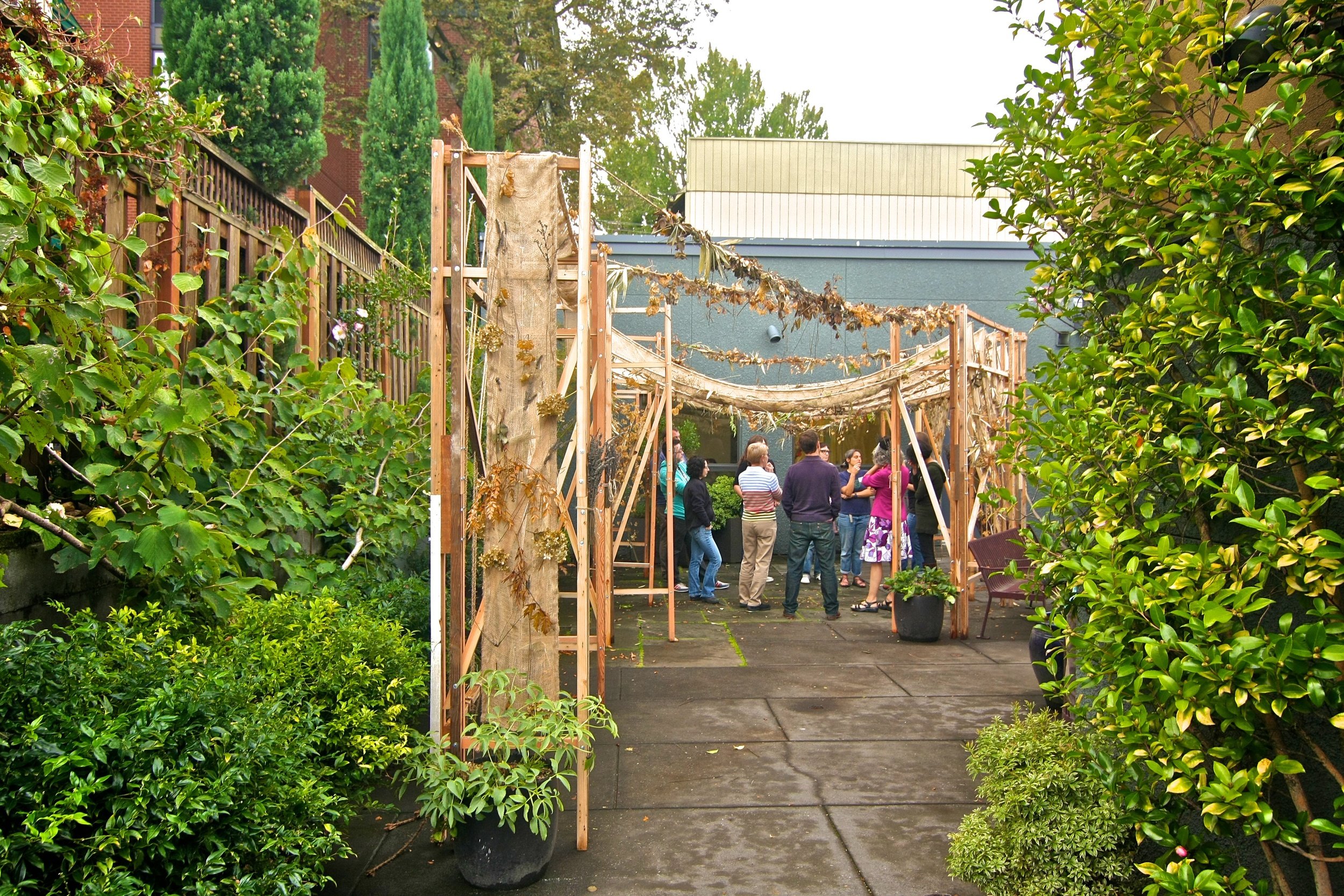Built Work
Coolest Cooler: Trade Show Booth Design-Build
Working with my client stakeholder, the Marketing Director at Coolest Cooler, I used renderings and mocked up layouts to help them visualize concepts for their trade show booth as well as provided ideas to push the design further. The key objectives were to draw attention to the product and point of purchase displays as well convey the identity of the brand.
Different zones were created within the small space available to help interactions with buyers. Additionally, I designed, fabricated, and assembled pieces, which could be reused for future events, to help the booth come together as a powerful marketing tool for the company and show their brand personality to outdoor retailers.

Mockup of different layouts and ideas

Fabricated tree pieces ready to paint

Fabricated tree pieces ready to paint

Small scale model of how the trees would look and stand together

SketchUp rendering of final layout and design
Sukkah Design-Build
As a part of a design team, we worked on designing and building a modular sukkah for Havurah Shalom, a northwest Portland synagogue. The goal of the project was to create a structure that would fit into the courtyard of the synagogue and could be disassembled, stored, and rebuilt each year for the Sukkot holiday by the members of the congregation.
Many of the design decisions were derived from the needs of the synagogue for an inexpensive structure that would last for years to come and could hold large groups for gathering. The structure was comprised of reclaimed wood which allowed us to remain under budget for the project.
The other materials included burlap sewn over hemp rope and plants gathered by congregation members to be strung in the overhead canopy and attached to the structure. Design material decisions came directly from the rules for the Jewish holiday regarding construction of the sukkah itself (i.e. the roof must be made from something that once grew in the earth but is no longer attached to the ground).
The team, with varying faiths, took time learning about the history and rules of construction for the sukkah. Were were honored to be invited by the congregation to join in celebrating underneath the sukkah for the first day of Sukkot at Havurah.









Sunshade
Design-Build
With the problem of too much southern sunlight coming in from the clerestory windows in the architecture studio at Miami University, my capstone studio team set out to find a solution. We came up with a collaborative design. Inspired by a "Keep Cincinnati Beautiful" project, we got the idea to take banners that were going to waste around the campus and the city, cut them into strips, and weave them into reused nets donated by the university.
We also used old corrugated plastic signs that were going to waste as the ribs for the nets. With a lot of organization and man hours, we harnessed the efforts of the entire department to assist with cutting and weaving the banners. While the entire timeline of the project streched over two semesters, the final phase of implementation, including weaving and hoisting the nets into place, was impressively completed in one week.













